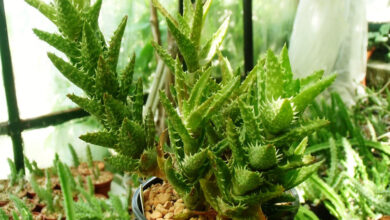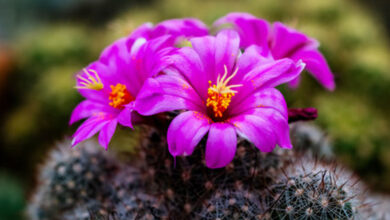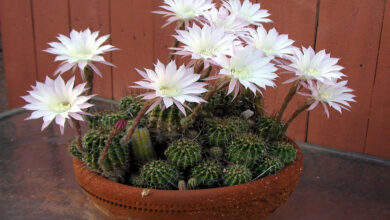Lobivia a small beautiful houseplant cactus
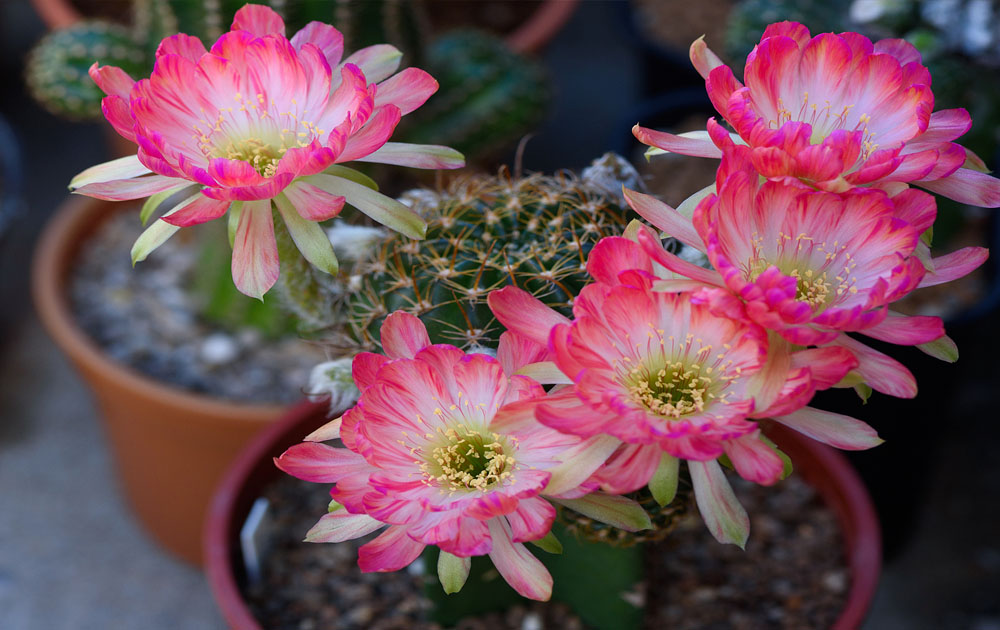
Lobivia arachnacantha is a small beautiful houseplant cactus. It is commonly present in South America. The plant is a small species commonly known as the Cob cactus. Lobivia consists of roughly 70 species, the majority of which are regarded as suitable starting home plants.
The term “arachnacantha” is derived from the Greek for “with spider web-shaped thorns.” This cactus, which is still often known as Lobivia arachnacantha, is an excellent starter cactus. It is fairly hardy and generally blooms with bright flowers that will entice even a non-cactophile partner.
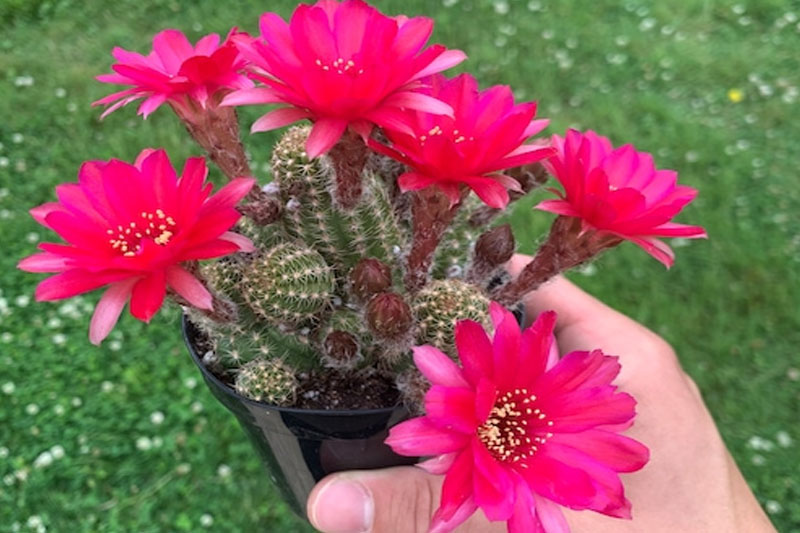
Lobivia characteristics
Lobivia cactus begins with a spherical form and grows longer as it ages. Vertical ribs run along the plant’s body and sprout spikes from a central location. The white spikes resemble spiders and rest flat on the ribcage. It has large blossoms on stalks that protrude out the side. The blooms look like tube-shaped petals that are elongated.
Note: Flowers bloom in different colors mainly in red, yellow, orange, or purple, and stays for 1-2 day.
Propagation of Lobivia
Cut one of the offsets of the cluster around the base of the mother plant to propagate your Lobivia plant. Remove an offset about one-third the size of the main cactus with a sharp, sterilized knife. Set the offset aside for a few days on a paper towel to allow a callus to grow over the cut end. Once calloused, place the cut end in a container with cactus soil or your own adjusted soil mix. Water sparingly until roots grow, then water as though the plant were mature.
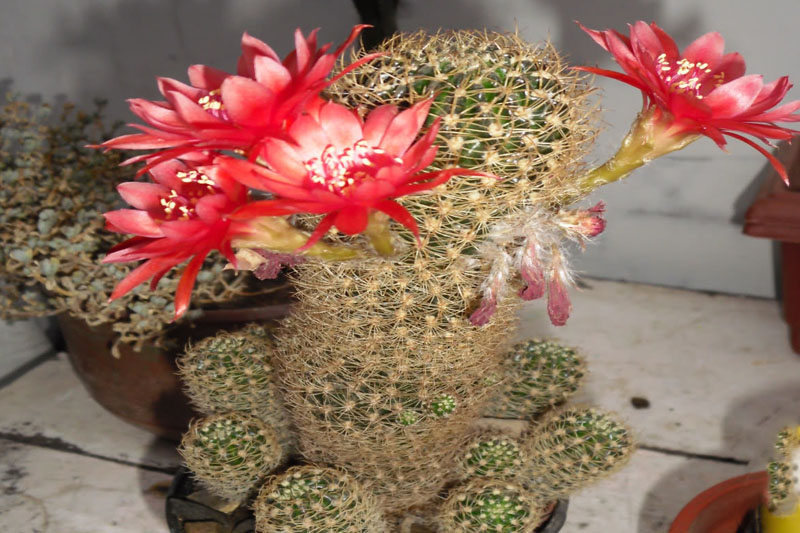
Common factors for Lobivia propagation
There are some common factors that are necessary for Lobivia propagation.
Soil and fertilizer
Grow the Lobivia cactus in a quick succulent soil or your own mixture of potting soil enriched with perlite and coarse sand in equal parts. Before filling the pot with soil, add a one-inch layer of tiny pebbles to the bottom to aid drainage & protect the roots. During the spring and summer, feed the plant once every 2 weeks with a high-potassium fertilizer to promote growth and flowering.
Water Requirements
Allow the soil to dry between waterings. To ensure fair distribution, water until the moisture flows out the drainage holes in the pot. Allow the soil to drain for 10 minutes before draining excess water from the drip tray to avoid root rot. During the spring and summer, stick to this watering regimen.
Temperature
Average home temperatures of roughly 70 degrees Fahrenheit (21 degrees Celsius) are good. Humidity values of 30 to 45 percent are also appropriate. Maintain these temperatures and humidity levels throughout the spring and summer months. So avoid temperatures below 50 degrees Fahrenheit (10 degrees Celsius) while Lobivia is actively growing and flowering.
Light Requirements
Lobivia generally grows indoors, with bright, direct sunshine. For best growth and blooming, place the plant in a south or west-facing window. To avoid burning, bring the furniture outside into dappled sunshine or partial shade. Indoors, provide adequate ventilation to avoid health problems.
Why is Lobivia Cactus dormant in the winter season?
All Lobivia arachnacantha are sleep/dormant in the whole winter season. This phase of rest allows the plant to redirect its energy from growth to bud creation in preparation for the next season’s blossoming. During this period, do not water the plant. Move the cactus to a location with temperatures of about 45°F (7°C) and no more than eight hours of indirect sunshine every day. Return the Lobivia cactus to higher temperatures and more sunshine once spring arrives. To enhance flowering, gradually resume regular waterings and begin fertilizer feedings.
The Lobivia cactus is low maintenance and takes up very little space on a sunny windowsill. Its showy blooms are relatively large in comparison to the plant and add a splash of color to your home. This cactus makes a great gift for houseplant lovers of all skill levels.
General questions about Lobivia
What is the maximum height of the Lobivia cactus?
The Lobivia cultivar, as a small cactus, seldom grows taller than 6 inches (15 cm).
When is the right time to repot Lobivia?
When the cactus has outgrown its present pot, repot it in the spring. Use new soil and evenly spread around the roots properly.
Why is my Lobivia Cactus turning brown?
Some surface browning of adult cacti, known as corking, is a normal thing and is not a symptom of stress. If the browning is severe and paired with the softness of the cactus in that location, it is most certainly an indication of rot. Rot is frequent in overwatered cactus.
Reduce watering and remove the damaged part with a sharp and sterilized knife until all rotten tissue is gone.
What is causing the Lobivia to turn yellow?
Yellow cacti usually signal that the plant is getting too much sunshine or overwatering. So if you suspect overexposure to sunlight, transfer the cactus to a location with filtered sunlight or fewer hours of direct sunshine every day. When it comes to watering, make sure you only water the plant when the soil dries up, and don’t let it go for long periods of time without water throughout the spring and summer.
Which Pests Attack Lobivia Cactus?
Mealybugs, scale, and spider mites are the most frequent pests that infest cactus.
Recommendations: You can decorate your home with Tiger Tooth Aloe a Low Maintainance Cactus that is also very easy to grow popular house plant.

